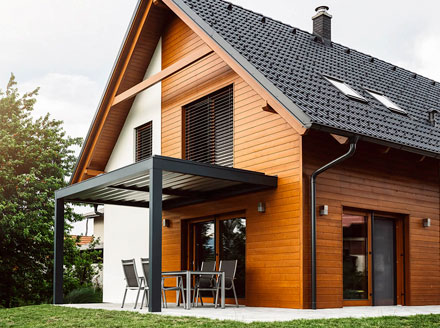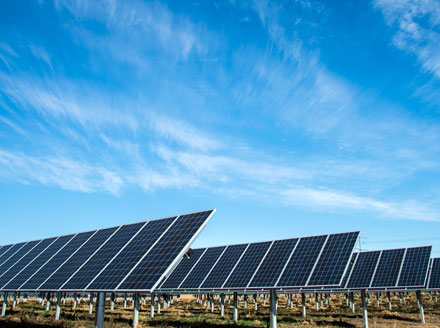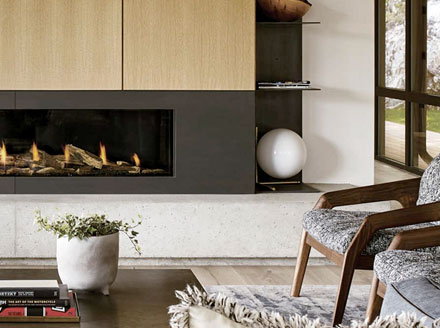Share This Post:
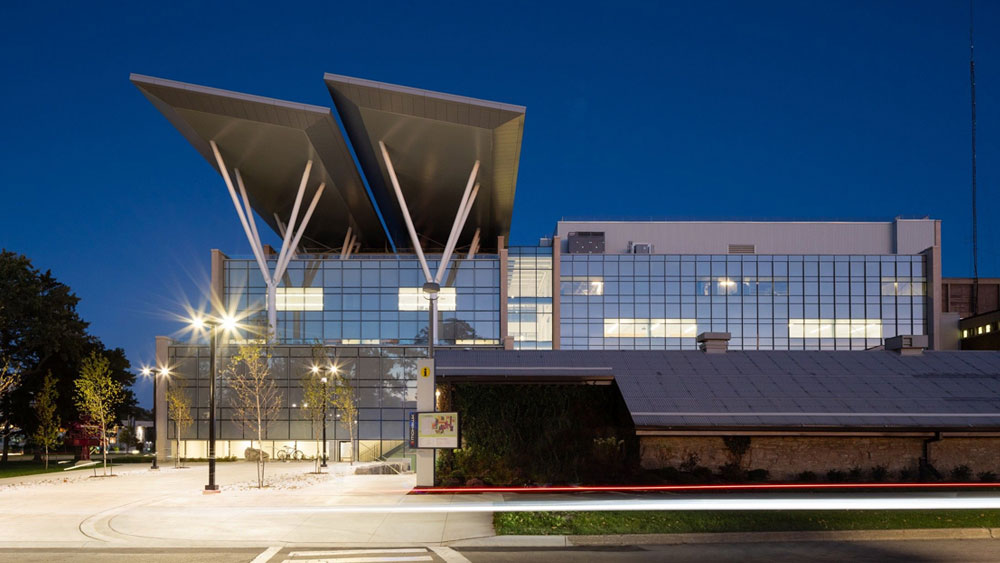
Image Credit: Ema Peter
Net Zero Energy Building
Net Zero Energy Building
This is post 2 of 2 in the series Green Building - An Overview
This is post 2 of 2 in the series
Green Building - An Overview
GREEN BUILDING | Carolyn Feinstein | November 13, 2020
GREEN BUILDING | Carolyn Feinstein
November 13, 2020
Net Zero Energy Building (NZEB) refers to a building that produces as much (or more) renewable energy onsite than the occupied building uses on an annual basis. There are a wide array of tools and technologies employed to reach this net zero energy goal, such as radiant cooling, green walls, heat exchange systems, and solar energy. In the last decade alone, technology has been able to make NZEB practices more efficient and attainable.
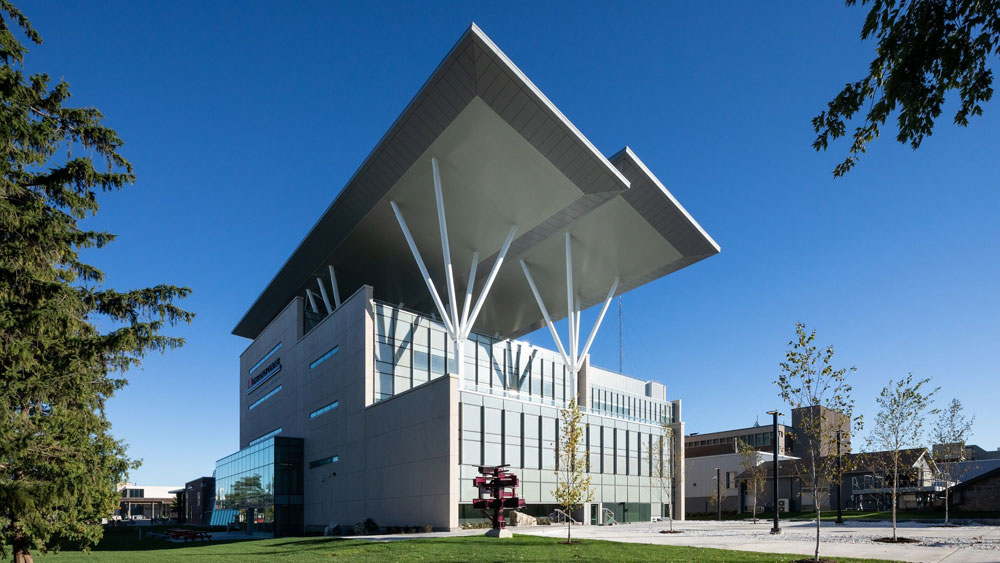
Image Credit: Ema Peters
Looking at the innovation and forward thinking of the Canadian Green Building Council (CaGBC) for NZEB inspiration, The Joyce Center for Partnership & Innovation at Mohawk College in Ontario (pictured above) is the country's largest Net Zero Energy institutional building. Built as part of a national and global pilot project, the center was designed employing an energy budget, rather than the typical constraints of financial budgets and schedules. This center is being used to help determine the requirements and standards for the CaGBC Zero Carbon Buildings Framework. Additionally, the data will contribute to the World Green Building Council's "Advancing Net Zero" project that is working to ensure all buildings are net zero energy by 2050.
These design and building practices employed in institutional projects such as The Joyce Center can be translated to smaller scale projects, like single and multi-family homes. Convincing the construction industry and private homeowners that the approach is financially sound, and integral to preserving our environment, is a much larger task.
Although NZEB practices ensure renewable energy production accounts for the energy demands of the site, it does not ensure the energy is being used wisely or efficiently. Without maximizing the integration of complimentary green building practices, like passive design and energy efficient construction methods, a NZEB may use more energy than otherwise necessary, which can have a heavy impact on the build budget. To put it simply, don't go into NZEB design trying to accommodate a 5-ton A/C unit for a 4,000 square foot house. Look at the broader picture; how do we reduce our need for a such a large, energy sucking appliance while maintaining a cool, comfortable interior?
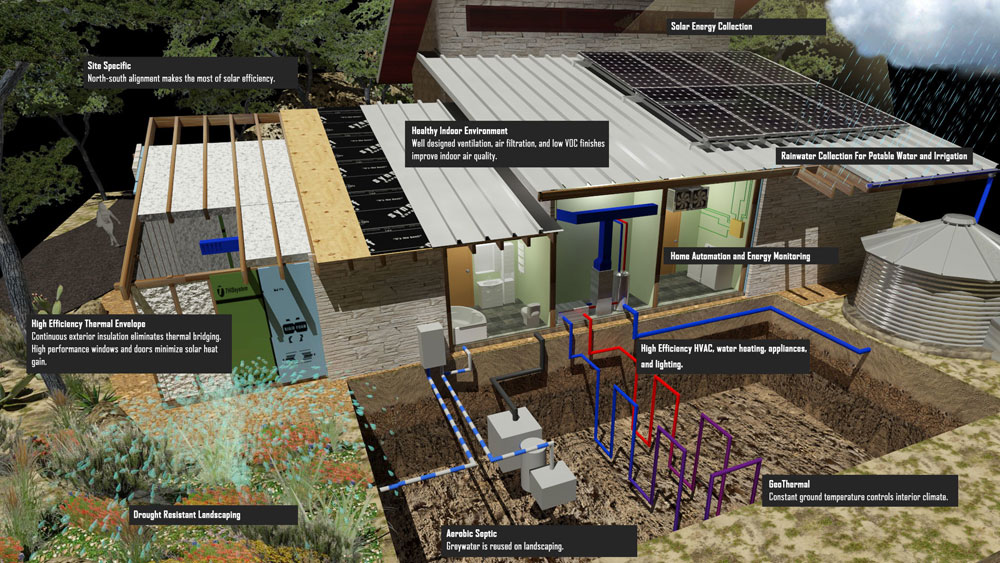
Image Credit: Build NATiVE
This is the point where passive house design, as we discussed here, is a great jumping off point to get to NZEB. By designing a home that uses less energy, like that of a passive house, the demand on the technology and systems to create energy is, of course, less. Building a passive house with properly insulated walls, free of thermal bridges with high quality windows and doors can use 46% less energy to cool and 86% less energy to heat than traditional construction.
Let's get back to what is involved in actually achieving a Net Zero Energy home. The goal here (to produce as much energy from renewable sources as the home will use) requires the implementation and integration of a variety of energy-producing and energy-saving technologies. These features may include a solar photovoltaics (PV) array, radiant cooling systems, structure orientation, energy-efficient windows, and low-energy appliances and fixtures.
Beginning by planning the orientation of the house is key to controlling the interior climate, and ultimately the energy needed to maintain that climate. Taking into account the regional climate, the building's orientation should take advantage of natural breezes, sunlight when you need it, and shade when you don't. Positioning the house in the optimal direction for the local climate will also help to ensure you are getting the most out of the onsite renewable energy sources.
Does this sound familiar? Of course it does! This is the first step to Passive House Design as well. In fact, the design of a Net Zero Energy Building may mirror the design and building practices of a Passive House in site planning, building envelope, door and window placement, and more. Net Zero Energy Buildings are taking it a step further by making up the difference in energy production that cannot be provided by a Passive House.
When mentioning renewable energy, most people will automatically think of the well-publicized and popular solar photovoltaics (PV) array, (a fancy way of saying solar panels). Although solar panels are now easily attainable, less costly than a decade ago, and enjoy ever-improving technology, it may not be the most efficient and cost-effective approach to renewable energy production.

Image Credit: Today's Homeowner
The first technology I look to when designing a Net Zero Energy Building is geothermal. The technology is relatively simple, less costly than solar arrays, and can be integrated into NZEB renovations of existing structures. Achieving a Net Zero Energy home with geothermal technically does not require as much insulation or a tightly sealed building envelope overall. This can have a huge impact on the overall scope and cost of a NZEB energy renovation to an existing structure. However, I would still recommend designing new construction according to a passive house standard in order to maximize the benefits of these green building practices.
Cost is always a factor. The upfront cost of constructing a Net Zero Energy home or office can be more substantial than a traditional structure. Examine the amortization of the investment over time, not just what it will cost to construct. Consider that in 5 to 7 years, the additional costs associated with NZEB design will be covered by the reduced energy bills. Additionally, tax incentives are available from the Federal government and many municipalities across the U.S. for green building practices. DSIRE is a comprehensive nationwide database of policies and incentives by state. For instance, a homeowner can receive a deduction of 22% to 26% of the cost of renewable energy sources through December 2021.
Finding the right renewable energy technology to achieve a Net Zero Energy home or building depends on the regional climate, energy needs, and cost. For instance, a geothermal heat pump may not be an option if you live in an area with restricted water rights, and the unpredictable air flow of an urban environment may rule out wind power. The expertise of your design and building team will help weigh the pros and cons of each approach to ensure your new home has met NZEB standards, and as time goes on, you can reconnect with that team to make any necessary adjustments to the renewable energy sources as your needs change.



